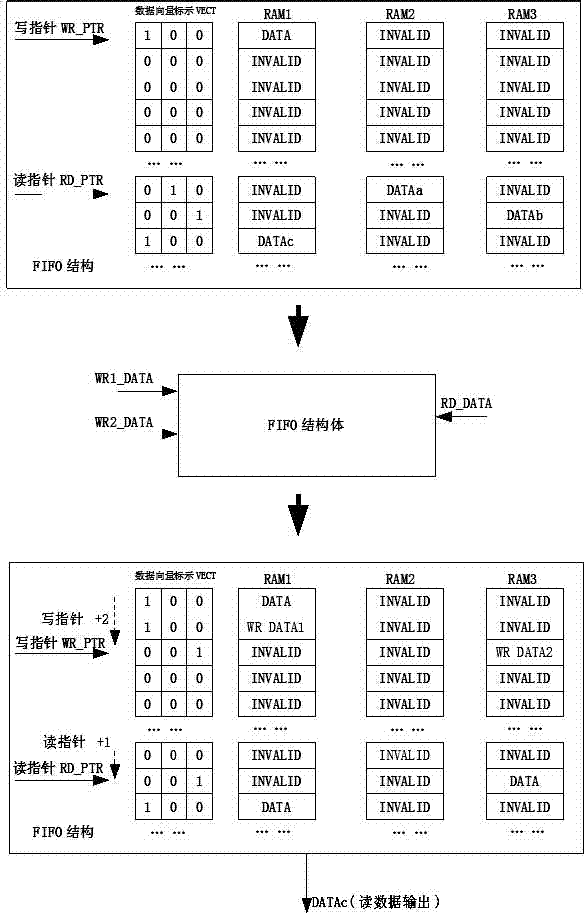Circuit structure of first-in-first-out memory based on random access memory
A circuit structure, first-in-first-out technology, applied in the field of rapid implementation of parallel scheduling, can solve the problems of increased design structure links, increased processing links, increased delays, etc., to reduce design complexity, speed up processing procedures, and reduce data delays Effect
- Summary
- Abstract
- Description
- Claims
- Application Information
AI Technical Summary
Problems solved by technology
Method used
Image
Examples
Embodiment Construction
[0016] Referring to the accompanying drawings, a brief description will be given below of the implementation of the content of the present invention.
[0017] Taking the currently designed high-speed network protocol chip as an example, in the design, after the multi-channel message data is received in parallel through the interface module, it enters the protocol processing module at the same time, and the multi-channel input and single-output FIFO is used for receiving and sorting, and then sequentially output to the Protocol processing module. Here, taking a FIFO with 2 channels of input and 1 channel of output as an example, the circuit structure and operation mode of this type of FIFO design are explained: when two channels of messages arrive at the FIFO at the same time and the FIFO read data signal is enabled at the same time, the FIFO simultaneously receives For the two-way message data, first obtain the writable address information in the current RAM according to the w...
PUM
 Login to View More
Login to View More Abstract
Description
Claims
Application Information
 Login to View More
Login to View More - R&D
- Intellectual Property
- Life Sciences
- Materials
- Tech Scout
- Unparalleled Data Quality
- Higher Quality Content
- 60% Fewer Hallucinations
Browse by: Latest US Patents, China's latest patents, Technical Efficacy Thesaurus, Application Domain, Technology Topic, Popular Technical Reports.
© 2025 PatSnap. All rights reserved.Legal|Privacy policy|Modern Slavery Act Transparency Statement|Sitemap|About US| Contact US: help@patsnap.com

